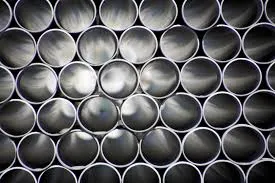
-
 Afrikaans
Afrikaans -
 Albanian
Albanian -
 Amharic
Amharic -
 Arabic
Arabic -
 Armenian
Armenian -
 Azerbaijani
Azerbaijani -
 Basque
Basque -
 Belarusian
Belarusian -
 Bengali
Bengali -
 Bosnian
Bosnian -
 Bulgarian
Bulgarian -
 Catalan
Catalan -
 Cebuano
Cebuano -
 China
China -
 China (Taiwan)
China (Taiwan) -
 Corsican
Corsican -
 Croatian
Croatian -
 Czech
Czech -
 Danish
Danish -
 Dutch
Dutch -
 English
English -
 Esperanto
Esperanto -
 Estonian
Estonian -
 Finnish
Finnish -
 French
French -
 Frisian
Frisian -
 Galician
Galician -
 Georgian
Georgian -
 German
German -
 Greek
Greek -
 Gujarati
Gujarati -
 Haitian Creole
Haitian Creole -
 hausa
hausa -
 hawaiian
hawaiian -
 Hebrew
Hebrew -
 Hindi
Hindi -
 Miao
Miao -
 Hungarian
Hungarian -
 Icelandic
Icelandic -
 igbo
igbo -
 Indonesian
Indonesian -
 irish
irish -
 Italian
Italian -
 Japanese
Japanese -
 Javanese
Javanese -
 Kannada
Kannada -
 kazakh
kazakh -
 Khmer
Khmer -
 Rwandese
Rwandese -
 Korean
Korean -
 Kurdish
Kurdish -
 Kyrgyz
Kyrgyz -
 Lao
Lao -
 Latin
Latin -
 Latvian
Latvian -
 Lithuanian
Lithuanian -
 Luxembourgish
Luxembourgish -
 Macedonian
Macedonian -
 Malgashi
Malgashi -
 Malay
Malay -
 Malayalam
Malayalam -
 Maltese
Maltese -
 Maori
Maori -
 Marathi
Marathi -
 Mongolian
Mongolian -
 Myanmar
Myanmar -
 Nepali
Nepali -
 Norwegian
Norwegian -
 Norwegian
Norwegian -
 Occitan
Occitan -
 Pashto
Pashto -
 Persian
Persian -
 Polish
Polish -
 Portuguese
Portuguese -
 Punjabi
Punjabi -
 Romanian
Romanian -
 Russian
Russian -
 Samoan
Samoan -
 Scottish Gaelic
Scottish Gaelic -
 Serbian
Serbian -
 Sesotho
Sesotho -
 Shona
Shona -
 Sindhi
Sindhi -
 Sinhala
Sinhala -
 Slovak
Slovak -
 Slovenian
Slovenian -
 Somali
Somali -
 Spanish
Spanish -
 Sundanese
Sundanese -
 Swahili
Swahili -
 Swedish
Swedish -
 Tagalog
Tagalog -
 Tajik
Tajik -
 Tamil
Tamil -
 Tatar
Tatar -
 Telugu
Telugu -
 Thai
Thai -
 Turkish
Turkish -
 Turkmen
Turkmen -
 Ukrainian
Ukrainian -
 Urdu
Urdu -
 Uighur
Uighur -
 Uzbek
Uzbek -
 Vietnamese
Vietnamese -
 Welsh
Welsh -
 Bantu
Bantu -
 Yiddish
Yiddish -
 Yoruba
Yoruba -
 Zulu
Zulu
frp winding machine
Understanding FRP Winding Machines A Key to Advanced Composite Manufacturing
Fiber Reinforced Polymer (FRP) winding machines have become pivotal in the manufacturing of composite materials, particularly for sectors like aerospace, automotive, and infrastructure. These machines are designed to create strong, lightweight structures by winding continuous fibers around a core, typically made from materials such as steel or plastic. The combination of fiber and polymer matrix results in a composite that offers exceptional strength and durability.
Understanding FRP Winding Machines A Key to Advanced Composite Manufacturing
One of the primary benefits of using FRP winding machines is their ability to produce complex shapes and structures that are difficult to achieve with traditional manufacturing methods. The winding process allows for the creation of components like pipes, tanks, and beams, which are essential in various applications. Furthermore, the flexibility in design means that manufacturers can tailor the composite materials to meet specific engineering requirements, thereby expanding the range of possible applications.
frp winding machine

The materials used in the winding process also play a crucial role in the final product's performance. High-strength fibers such as carbon, glass, and aramid are typically used, combined with a resin that provides the necessary bonding and protection from environmental factors. The choice of materials, coupled with the precision offered by modern winding machines, results in composites that can withstand extreme conditions while maintaining structural integrity.
Additionally, FRP winding machines contribute to sustainability in manufacturing. By using composite materials, manufacturers can produce lighter parts that reduce energy consumption in transportation applications. The longer lifespan of FRP products also means less waste, as they require less frequent replacement compared to traditional materials.
In the automotive industry, for example, the use of FRP components can lead to lighter vehicles that consume less fuel and emit lower levels of carbon dioxide. Similarly, in aerospace, the lightweight yet strong properties of FRP make it a preferred material for aircraft components, enhancing fuel efficiency and overall performance.
In conclusion, FRP winding machines are at the forefront of composite manufacturing technology. Their ability to produce high-quality, high-performance materials not only meets the increasing demands of various industries but also supports sustainable manufacturing practices. As this technology continues to evolve, we can expect even greater innovations that will further enhance the capabilities and applications of FRP materials in the future.
Latest news
-
Exploring the Benefits of Top Hammer Drifter Rods for Enhanced Drilling PerformanceNewsJun.10,2025
-
High-Precision Fiberglass Winding Machine for GRP/FRP Pipe Production – Reliable & Efficient SolutionsNewsJun.10,2025
-
FRP Pipes & Fittings for Shipbuilding - Corrosion-Resistant & LightweightNewsJun.09,2025
-
Premium FRP Flooring Solutions Durable & Slip-ResistantNewsJun.09,2025
-
Premium Fiberglass Rectangular Tanks Durable & Lightweight SolutionNewsJun.09,2025
-
Tapered Drill String Design Guide Durable Performance & UsesNewsJun.09,2025









